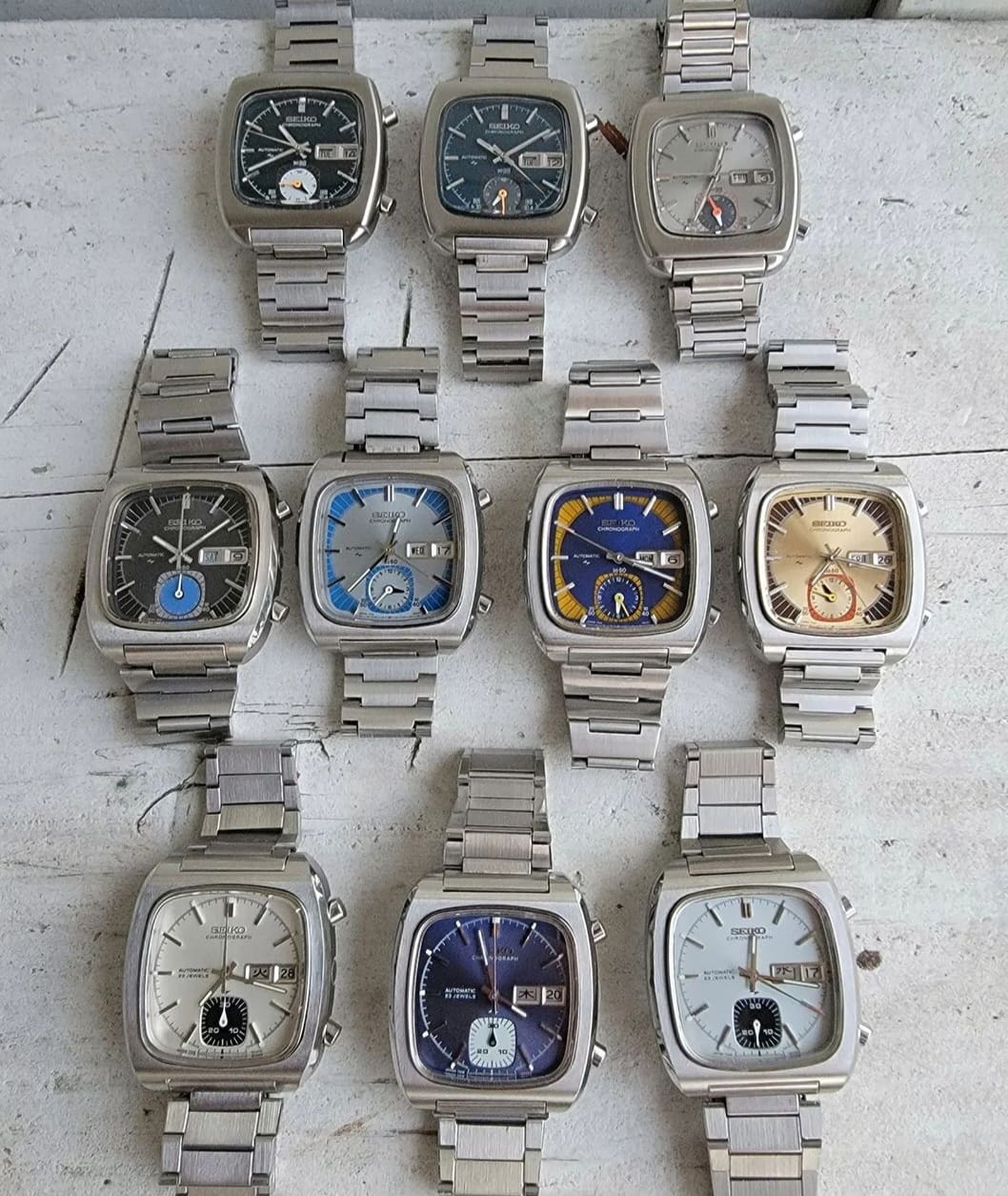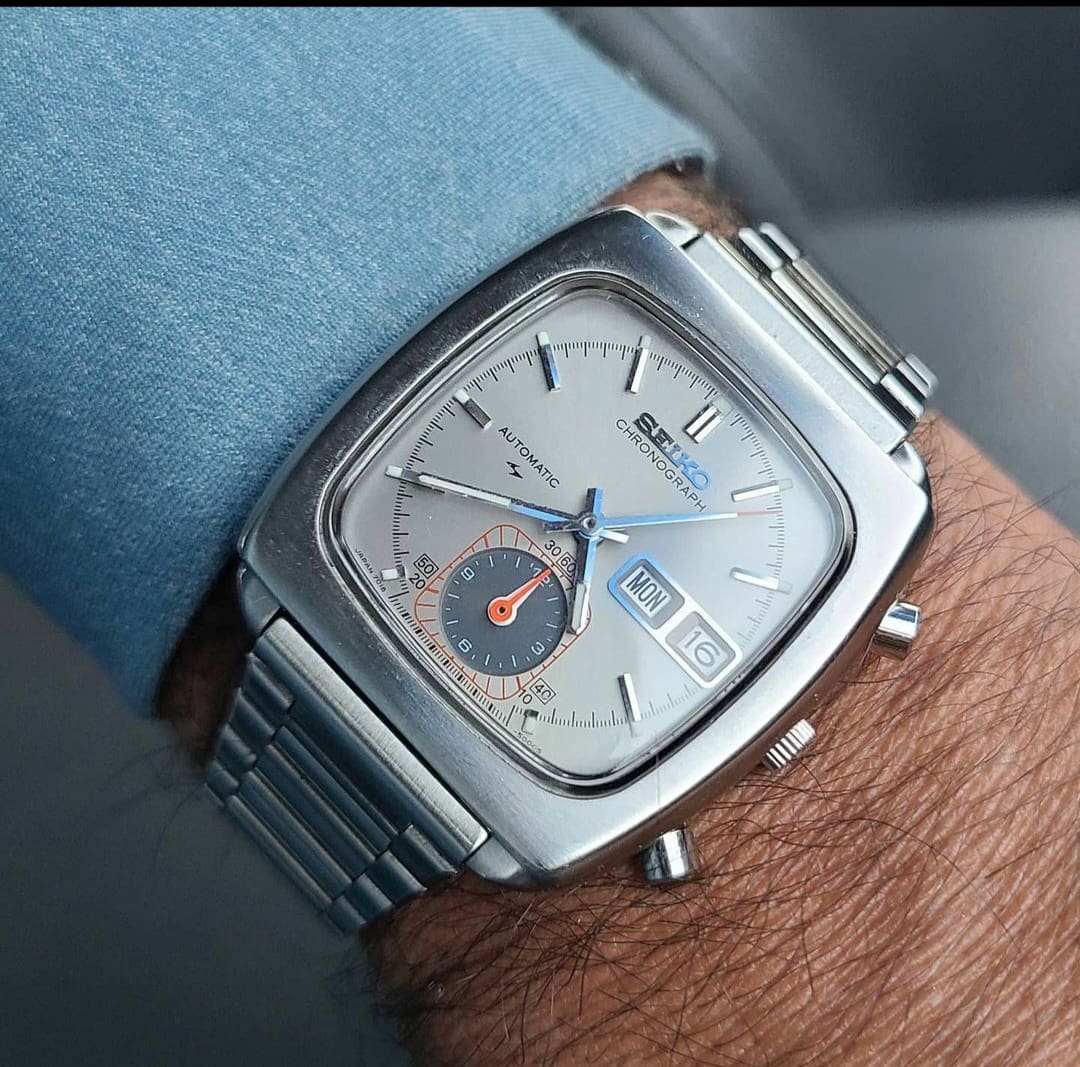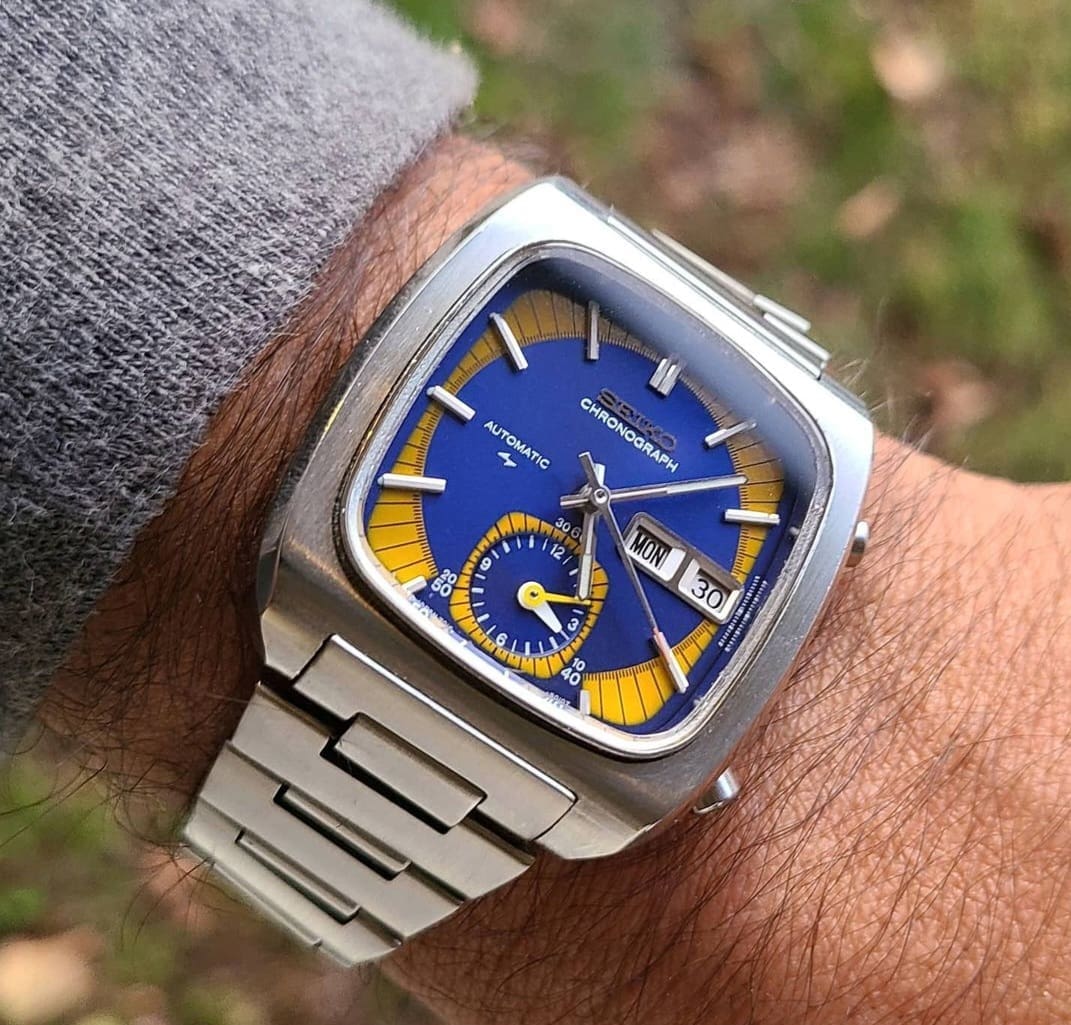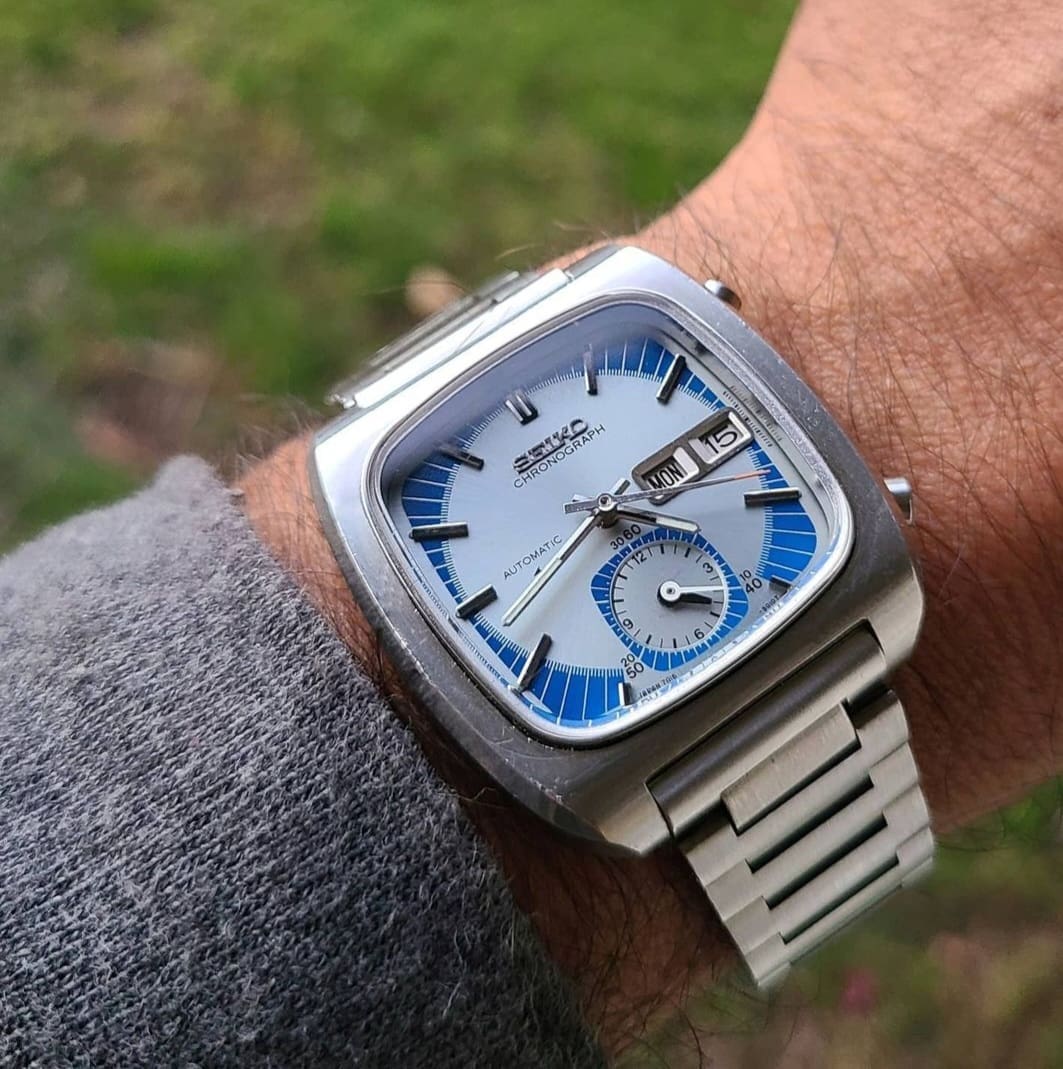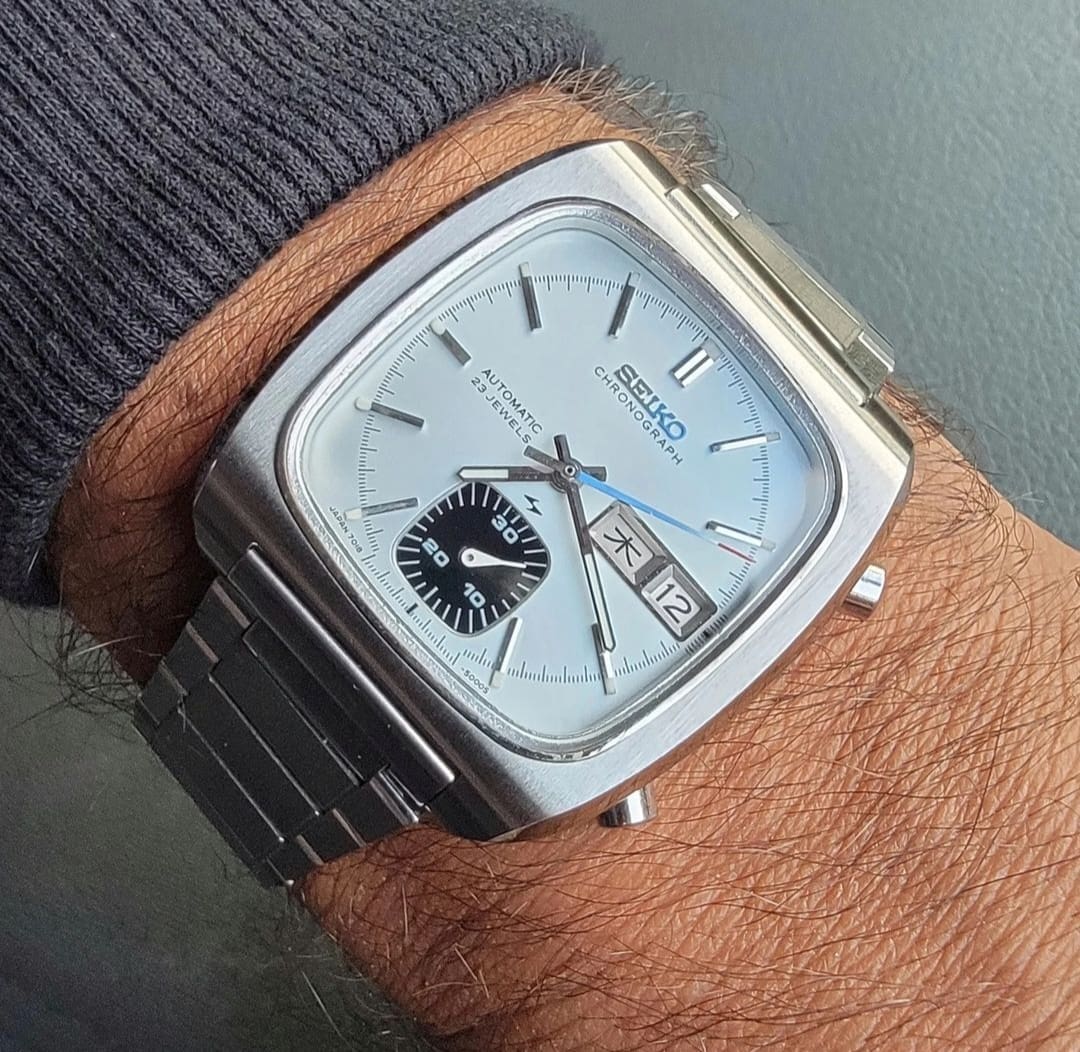Disillusioned with the prices at auctions? Check out this full set of Seiko “Monaco” chronographs on this novel auction site
Brendan CunninghamEditor’s note: Brendan Cunningham is a Professor of Economics at Eastern Connecticut State University in the US and the man behind Horolonomics, a blog that explores the economic issues in watchmaking.
Over the last five years or so, the luxury watch auction market seems to have grown more and more inaccessible for many collectors. Economist Stephen Locke, at Western Kentucky University, and I have written a working paper in which we’ve closely looked at the sale of more than 7,000 luxury watches by a major international auction house since 2015. These watches sold for just under $1 billion. What’s particularly interesting is that the auction house involved in our analysis has signalled to buyers for more than six years that their typical watch lot is worth pretty much the same amount with each passing year. In other words, their published estimates haven’t really trended up or down. Nevertheless, bidders keep paying a greater and greater premium above the house’s estimate as each auction season passes. The year 2021 was particularly incredible in this regard.
In that year, a box that FP Journe produced in order to deliver three of his early Souscription watches sold for over $100,000. That is a pretty steep price for a box. Hope springs eternal, though, for collectors who are less interested in the market segment with a six figure entry fee. Innovation, past and present, means that there are still outstanding and desirable watch designs available through novel channels that won’t set you back the retail price of a new Range Rover.
Take, for example, the upcoming auction of a “full set” of Seiko “Monaco” chronographs by Doublewrist Auctions. The story of this lot encompasses so many of the characteristics at the centre of the watch community: friendship, passion, creative thinking, the “hunt” and the payoff. Let’s begin with the auction platform itself.
Doublewrist is an online auction platform founded and lead by Christian Kim, an attorney on the West Coast. On his blog ScrewDownCrown, F. (aka @kingflum on Instagram) published an outstanding article on the motivation behind Doublewrist and the platform’s position within the wider auction industry. I’d encourage readers to consult that post for a very detailed discussion. The punchline, when it comes to Doublewrist, is that Christian found a muse in “Bring a Trailer”, a wildly successful auction platform for cars. Christian’s approach is one that breeds success for many internet startups. The key strategic choice is to “disintermediate” as much as possible. Doublewrist supplies the “forum” on which buyer and seller meet. Doublewrist does not handle a watch and they do not take their own pictures of the product. They are taking the position of a “lean” intermediary in contrast to other such auction platforms, such as eBay, that have chosen to mediate more than they have in the past (for example, by “authenticating” watches).
As a result, Doublewrist fees for conducting an auction are far more modest than one typically finds. This is also a model that scales very well: if you do not need to move watches around, store them, insure them, and present them to the public, your fixed costs are much lower. Christian has a very small team that has successfully auctioned around $200,000 worth of watches since May of 2021. Their “beta” seems to have gone well.
Like many watch enthusiasts, Christian has inspired others to begin collecting. Roughly five years ago, his friend Brian (IG @seiko_b_) began collecting. Brian has owned a wide range of watches, including an AP Royal Oak and a Rolex Submariner “Flat 4” Kermit. At some point, though, he was “bit by the bug” and began collecting Seiko. Through a post by @jackwongyf, he learned about the Seiko Monaco and set out on a quest to collect a “full set” of this design. He succeeded, and the fruits of his hard work will be available for purchase in a single lot sold through Doublewrist.
The Seiko Monaco has a fascinating history. It was produced by Seiko’s Daini plant, one of the two “sled dog” factories pulling the Seiko brand through the middle of the 20th century. I describe Daini as a sled dog because I think that is an apt metaphor for how Seiko deployed Daini and its second plant, “Suwa.” Some have described their relationship as a competition, but a closer read suggests that competition is not necessarily an adequately nuanced description. It is certainly true that the two plants developed their own innovations and each hoped to do something independently that would be wildly successful for Seiko. However, the end goal was not for Daini to beat and eliminate Suwa as a rival (or vice versa). Rather, when one plant met with success, its innovation diffused to the other plant, so that both would benefit.
This is why I think of Daini and Suwa as “sled dogs” on the same team. One could pull particularly hard and move the sled forward more rapidly (in this case, the sled representing the Seiko brand itself), but the dogs are tethered together, so one dog successfully exerting effort will also pull along the other. The dogs may “compete” with each other, because they may feel driven to work harder when their team-mate does likewise, but at the end of the day it is the success of the entire sled team (brand) that really matters. The competition is not zero sum, rather, the parts are arranged so that the whole is greater than their sum.
The Seiko Monaco is a testimonial to the fact that Seiko’s management strategy was a masterstroke. In the mid-to-late 1960s, the brand achieved better and better scores in chronometry competitions. The movement powering the Monaco, the reference X, was thin compared to its contemporaries. Function was not sacrificed at the altar of form, though. The automatic winding Seiko Monaco 7016A offered a wide array of complications: quickset date, bilingual day indicator, central chronograph hand with flyback, and, at six o’clock, a co-axial accumulator of the chronograph’s running hours and minutes.
The Monaco’s variation on Seiko’s “language of design” also set it apart from the pack. The case resembled the squarish television sets of the pre-HD era, with a roughly 4:3 aspect ratio. A wide array of colors were on offer. The assemblage of design cues is enough to prompt memories of the 1970s for some collectors and communicate that era’s aesthetics to others.
In Doublewrist’s upcoming auction of a “full set” of Seiko Monacos, there is an opportunity to acquire a rare package of important chronographs. What’s noteworthy is that rarity, here, does not correspond to a brand manager’s answer to the question “limited edition of how many?” Instead, this rarity comes through the rather significant effort required to chase down variants of a novel design from the early years of automatic mechanical chronographs. The low fees associated with Doublewrist imply that the ultimate winner will face lower costs of acquiring this collection, compared to other sourcing channels. Let’s hope that the future holds more opportunities like this.




